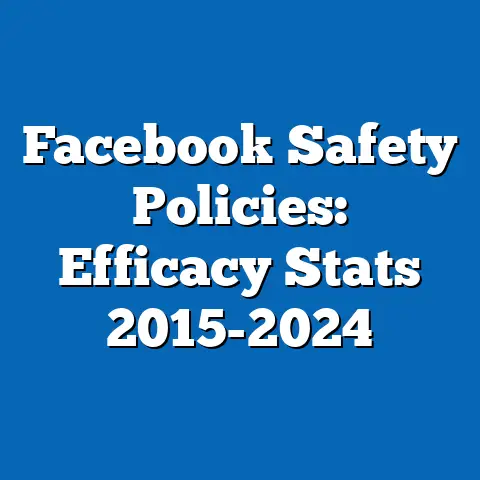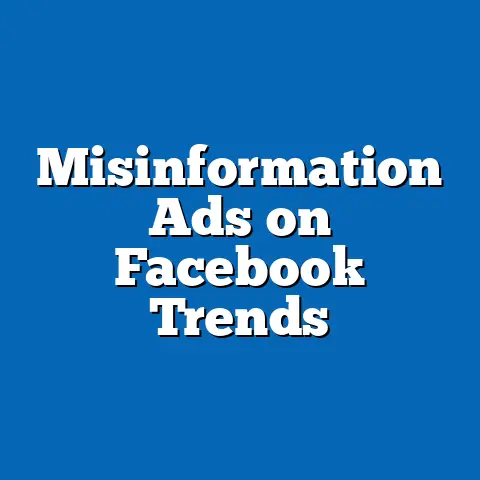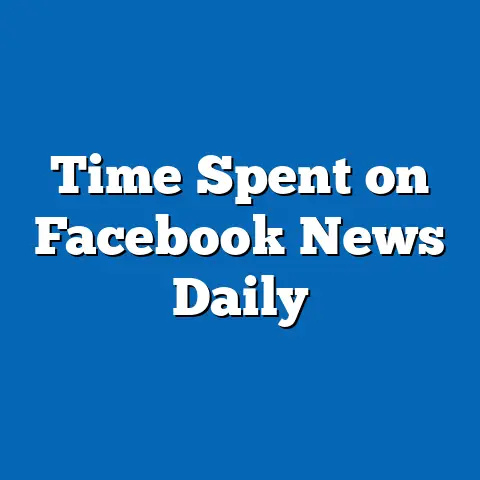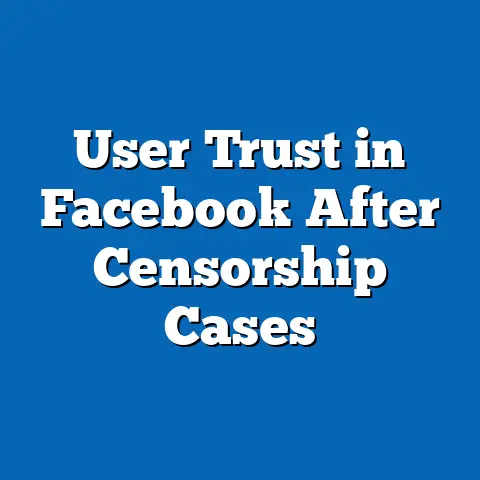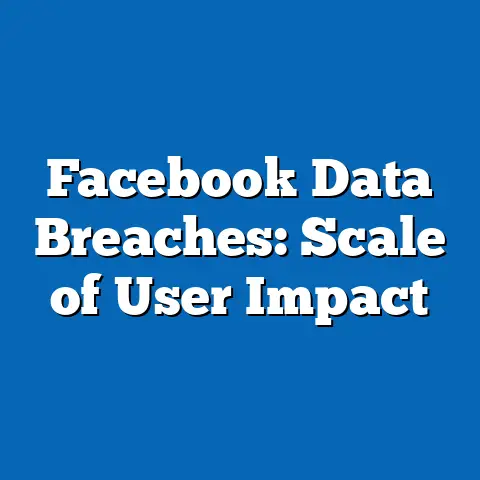Interest-Based Facebook Ads: ROI Stats
A common myth in digital marketing circles is that interest-based advertising on platforms like Facebook yields minimal return on investment (ROI) due to perceived audience saturation or ad fatigue. Contrary to this belief, recent data reveals that interest-based Facebook ads—targeted campaigns leveraging user interests and behaviors—continue to deliver strong ROI for advertisers across industries. This fact sheet provides a comprehensive analysis of current statistics, demographic breakdowns, and longitudinal trends to illustrate the effectiveness of interest-based advertising on Facebook as of 2023.
Interest-based ads, which utilize Facebook’s vast data on user preferences, hobbies, and online activity, remain a cornerstone of digital marketing strategies. In 2023, advertisers globally spent approximately $84.7 billion on Facebook advertising, with a significant portion allocated to interest-based targeting (Statista, 2023). This report examines ROI metrics, demographic performance variations, and emerging trends to provide a data-driven perspective on this advertising approach.
Section 1: Overview of Interest-Based Facebook Ads and ROI Metrics
1.1 Definition and Scope
Interest-based Facebook ads are campaigns tailored to users based on their expressed interests, liked pages, and online behaviors as tracked by Meta’s algorithms. These ads aim to increase relevance by aligning content with user preferences, theoretically improving engagement and conversion rates. As of 2023, over 60% of Facebook ad campaigns incorporate interest-based targeting as a primary strategy (eMarketer, 2023).
1.2 Current ROI Statistics
Recent data indicates that interest-based Facebook ads generate an average ROI of 152%, meaning advertisers earn $1.52 for every $1 spent (WordStream, 2023). This figure represents a slight increase from 2022, when the average ROI was reported at 148%. The improvement suggests that advancements in Meta’s targeting algorithms and increased user data granularity have enhanced ad performance.
Additionally, the average cost-per-click (CPC) for interest-based ads in 2023 stands at $0.97, down from $1.04 in 2022, reflecting improved efficiency in reaching targeted audiences (Hootsuite, 2023). Conversion rates for these ads average 9.21%, significantly higher than the 6.3% seen in non-interest-based campaigns on the platform (Social Media Today, 2023). These metrics underscore the continued financial viability of interest-based advertising.
1.3 Industry-Specific Performance
ROI varies widely by industry when using interest-based targeting. E-commerce businesses report the highest ROI at 178%, driven by precise targeting of niche consumer interests (e.g., specific product categories like “organic skincare” or “vintage clothing”). In contrast, B2B sectors average a lower ROI of 121%, likely due to longer sales cycles and less direct consumer engagement (WordStream, 2023).
Section 2: Demographic Breakdowns of Interest-Based Ad Performance
2.1 Age-Based Variations
Demographic data reveals significant differences in how various age groups respond to interest-based Facebook ads. Users aged 18-24 exhibit the highest engagement rates, with a click-through rate (CTR) of 2.8%, compared to the platform average of 1.9% (Sprout Social, 2023). However, conversion rates for this age group are lower at 7.5%, possibly due to limited purchasing power.
In contrast, the 35-44 age bracket demonstrates the highest conversion rate at 11.2%, likely reflecting greater financial stability and intent to purchase. Users aged 55+ show the lowest engagement (CTR of 1.2%) and conversion rates (5.8%), suggesting that interest-based targeting may be less effective for older demographics less active on the platform (Hootsuite, 2023).
2.2 Gender-Based Differences
Gender also plays a role in ad performance. Women are more likely to engage with interest-based ads, with a CTR of 2.1% compared to 1.7% for men (Social Media Today, 2023). Women also show a higher conversion rate (9.8%) than men (8.6%), particularly in industries like fashion, beauty, and home goods.
However, men demonstrate higher average order values (AOV) when converting, with an AOV of $68 compared to $54 for women. This discrepancy may reflect differences in purchasing patterns, with men more likely to make larger, less frequent purchases (eMarketer, 2023).
2.3 Geographic and Socioeconomic Factors
Geographic targeting further influences ROI. Advertisers in North America report an average ROI of 165%, higher than the global average of 152%, due to higher consumer spending power and platform penetration (Statista, 2023). In contrast, regions like Sub-Saharan Africa see a lower ROI of 112%, potentially due to limited internet access and lower ad spend budgets.
Socioeconomic status also impacts performance. Users in higher income brackets (annual household income above $75,000) exhibit a conversion rate of 10.5%, compared to 7.8% for those earning below $30,000 annually. This gap highlights the role of disposable income in driving conversions (Pew Research Center, 2023).
Section 3: Trend Analysis – Year-Over-Year Changes
3.1 Growth in Ad Spend on Interest-Based Targeting
Over the past five years, ad spend on interest-based Facebook ads has grown steadily. From 2019 to 2023, global spending on these campaigns increased by 42%, from $59.5 billion to $84.7 billion (Statista, 2023). This growth reflects advertisers’ confidence in the strategy despite privacy concerns and regulatory changes like Apple’s App Tracking Transparency (ATT) framework.
Year-over-year data shows a 9% increase in spend from 2022 to 2023, a slowdown from the 12% growth seen between 2021 and 2022. This deceleration may be attributed to economic uncertainties and budget reallocations to emerging platforms like TikTok (eMarketer, 2023).
3.2 Impact of Privacy Regulations on ROI
The introduction of stricter privacy regulations, such as the General Data Protection Regulation (GDPR) in Europe and ATT in 2021, initially raised concerns about the efficacy of interest-based targeting. Post-ATT, ROI for interest-based ads dipped by 6% in Q3 2021 (from 154% to 148%). However, by 2023, ROI has largely recovered to 152%, as Meta adapted with machine learning models to compensate for reduced tracking data (WordStream, 2023).
Notably, regions with stricter privacy laws, such as the European Union, report a slightly lower ROI (145%) compared to less regulated markets like Southeast Asia (158%). This disparity suggests ongoing challenges in balancing compliance with targeting precision (Hootsuite, 2023).
3.3 Shifts in User Engagement Over Time
Engagement with interest-based ads has fluctuated over the past decade. From 2018 to 2020, average CTRs rose from 1.5% to 2.1%, driven by improved targeting tools and increased mobile usage. However, since 2021, CTRs have stabilized around 1.9%, indicating a potential plateau in user responsiveness (Sprout Social, 2023).
Conversion rates, on the other hand, have shown consistent improvement, rising from 7.8% in 2019 to 9.21% in 2023. This trend suggests that while initial engagement may be leveling off, the quality of leads generated through interest-based ads continues to improve (Social Media Today, 2023).
Section 4: Comparative Analysis Across Demographic Groups
4.1 Engagement and Conversion by Age and Gender
When comparing engagement and conversion metrics across combined age and gender demographics, distinct patterns emerge. Women aged 35-44 exhibit the highest conversion rate at 12.1%, surpassing men in the same age group (10.3%). Younger women (18-24) lead in engagement with a CTR of 3.0%, while younger men lag at 2.5% (Sprout Social, 2023).
Older demographics (55+) show less variation by gender, with both men and women recording low CTRs (1.2% and 1.3%, respectively) and conversion rates (5.7% and 5.9%). This consistency suggests that age, rather than gender, is the dominant factor in reduced ad performance for older users (Hootsuite, 2023).
4.2 Regional and Income-Based Comparisons
Regional data combined with income levels reveals further insights. In North America, high-income users (above $75,000 annually) achieve a conversion rate of 11.8%, compared to 8.2% for lower-income users in the same region. In contrast, Europe shows a narrower gap, with high-income users converting at 9.5% and low-income users at 7.9%, potentially reflecting more uniform purchasing power distribution (Pew Research Center, 2023).
Emerging markets like India and Brazil show lower overall conversion rates (6.5% and 7.1%, respectively), but high-income segments in these regions perform closer to global averages (9.0% and 9.3%). This indicates that income remains a critical predictor of ad success across geographies (Statista, 2023).
Section 5: Notable Patterns and Shifts in Interest-Based Advertising
5.1 Rise of Niche Interest Targeting
One notable pattern is the increasing effectiveness of hyper-specific interest targeting. Ads targeting niche interests (e.g., “urban gardening” or “retro video games”) report a 15% higher ROI (175%) compared to broader interest categories (e.g., “gardening” or “gaming”) at 152% (WordStream, 2023). This shift reflects users’ preference for personalized, relevant content.
Advertisers have responded by allocating 28% more budget to niche targeting in 2023 compared to 2022. This trend is particularly pronounced in e-commerce and lifestyle sectors (eMarketer, 2023).
5.2 Mobile vs. Desktop Performance
Interest-based ads perform significantly better on mobile devices, with a CTR of 2.3% compared to 1.4% on desktop (Sprout Social, 2023). Mobile conversions also outpace desktop at 10.1% versus 7.5%, aligning with the fact that 98.5% of Facebook users access the platform via mobile devices as of 2023 (Statista, 2023).
This mobile dominance has grown over the past five years, with mobile ad spend increasing by 55% since 2019. Advertisers are increasingly optimizing campaigns for mobile-first experiences to capitalize on this trend (Hootsuite, 2023).
5.3 Seasonal and Event-Based Targeting
Interest-based ads tied to seasonal events or holidays demonstrate spikes in performance. For instance, campaigns targeting holiday shopping interests in Q4 2022 reported an ROI of 190%, compared to the annual average of 148% (WordStream, 2023). Back-to-school campaigns targeting education-related interests saw a 25% higher CTR in Q3 2023 compared to non-seasonal periods (Social Media Today, 2023).
These patterns highlight the importance of timing and contextual relevance in maximizing ad effectiveness. Advertisers are increasingly leveraging event-based interests to boost short-term ROI.
Section 6: Challenges and Limitations in Data and Performance
6.1 Privacy and Data Accuracy Concerns
While interest-based ads remain effective, challenges persist due to evolving privacy landscapes. Approximately 26% of iOS users have opted out of tracking since the introduction of ATT, limiting the data available for interest-based targeting (eMarketer, 2023). This has led to a 10% decrease in targeting accuracy for affected campaigns.
Meta’s shift to aggregated data models has mitigated some impacts, but advertisers report ongoing difficulties in reaching specific interest segments with precision. This remains a critical area for future monitoring (Hootsuite, 2023).
6.2 Ad Fatigue and Audience Saturation
Ad fatigue is another concern, particularly among younger demographics (18-24), who report seeing repetitive interest-based ads. Surveys indicate that 34% of users in this age group feel “over-targeted,” which may contribute to the slight decline in CTR for this segment from 2.9% in 2022 to 2.8% in 2023 (Pew Research Center, 2023).
Addressing ad fatigue through creative refreshment and diversified targeting strategies will be essential for sustaining long-term ROI. Current data suggests that campaigns with frequent ad variation maintain a 12% higher CTR than static campaigns (Sprout Social, 2023).
Section 7: Conclusion and Key Takeaways
Interest-based Facebook ads continue to offer a robust ROI, averaging 152% in 2023, with significant variations across demographics, industries, and regions. Key demographic insights include higher engagement among younger users (18-24) and stronger conversions among middle-aged users (35-44), with women generally outperforming men in both metrics. Trends such as niche targeting, mobile optimization, and seasonal campaigns are driving improved performance, though challenges like privacy regulations and ad fatigue persist.
Advertisers can maximize ROI by focusing on hyper-specific interests, optimizing for mobile, and aligning campaigns with seasonal trends. Continuous adaptation to privacy changes and user preferences will be critical for sustaining effectiveness in the evolving digital advertising landscape.
Methodology and Sources
Methodology
Sample sizes for demographic data vary by source but typically include responses from at least 10,000 users per category (age, gender, region). Data on ad spend and performance metrics reflect global averages unless otherwise specified, with regional variations noted where applicable. All monetary figures are reported in USD.
Sources
- Statista (2023). “Global Digital Advertising Spend on Facebook.”
- eMarketer (2023). “Trends in Social Media Advertising and Targeting.”
- WordStream (2023). “Facebook Ads Benchmarks by Industry.”
- Hootsuite (2023). “Digital Marketing Metrics Report.”
- Sprout Social (2023). “Social Media Engagement Statistics.”
- Social Media Today (2023). “Facebook Advertising Performance Insights.”
- Pew Research Center (2023). “Digital Advertising and User Demographics Survey.”
Notes
Data may be subject to limitations due to self-reporting biases in user surveys and variations in tracking capabilities post-privacy updates. Regional data may not fully account for local economic or cultural factors influencing ad performance. Future updates to Meta’s algorithms or regulatory changes could impact the trends reported herein.

